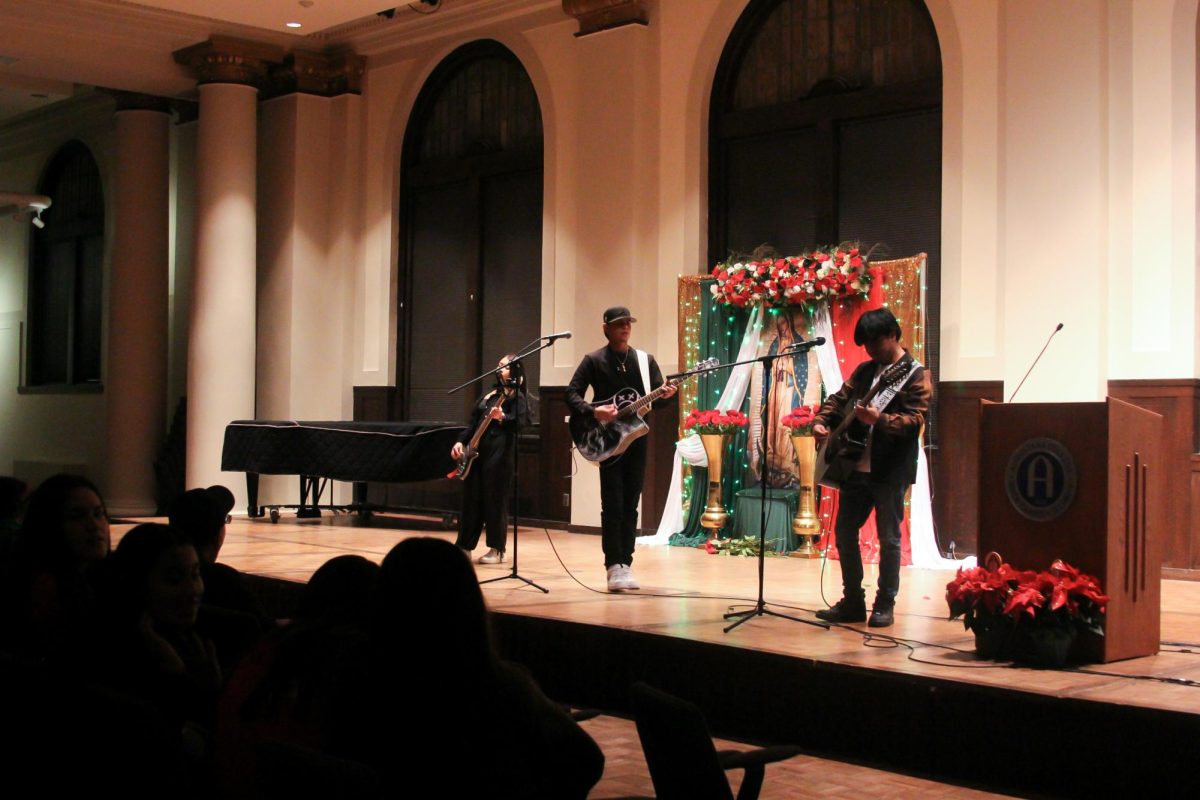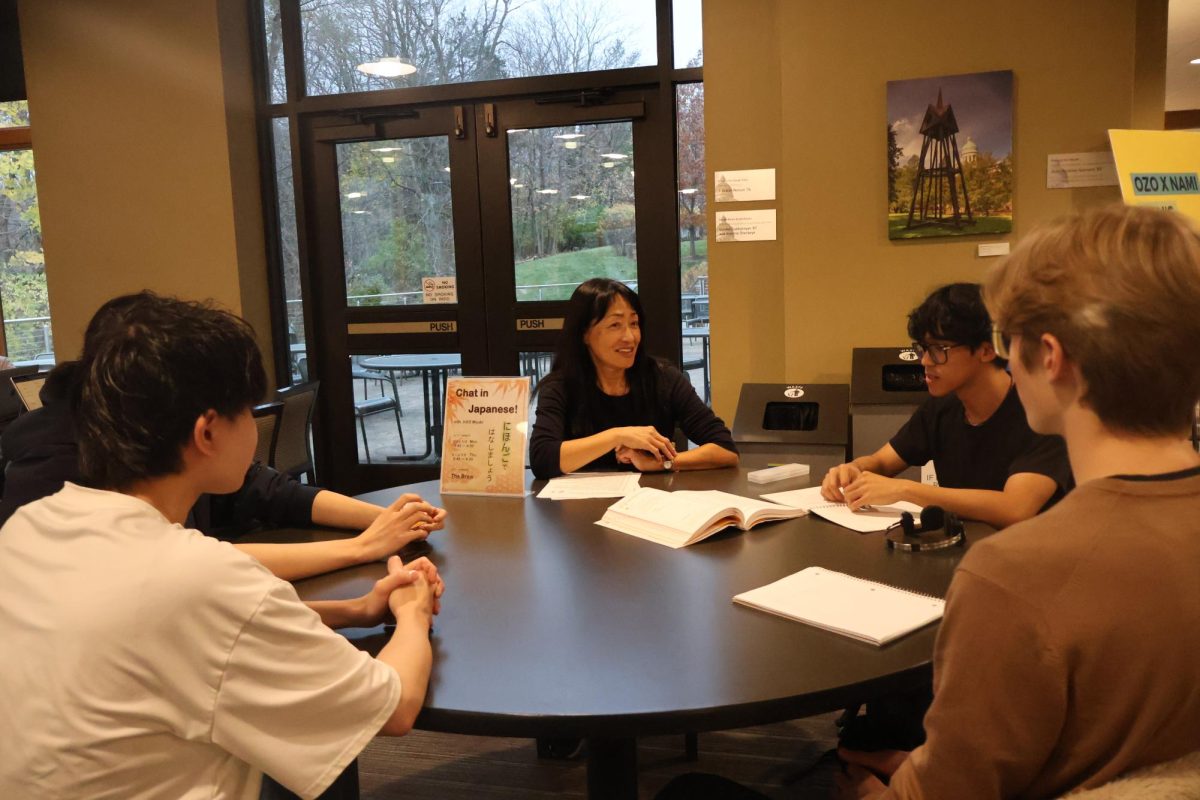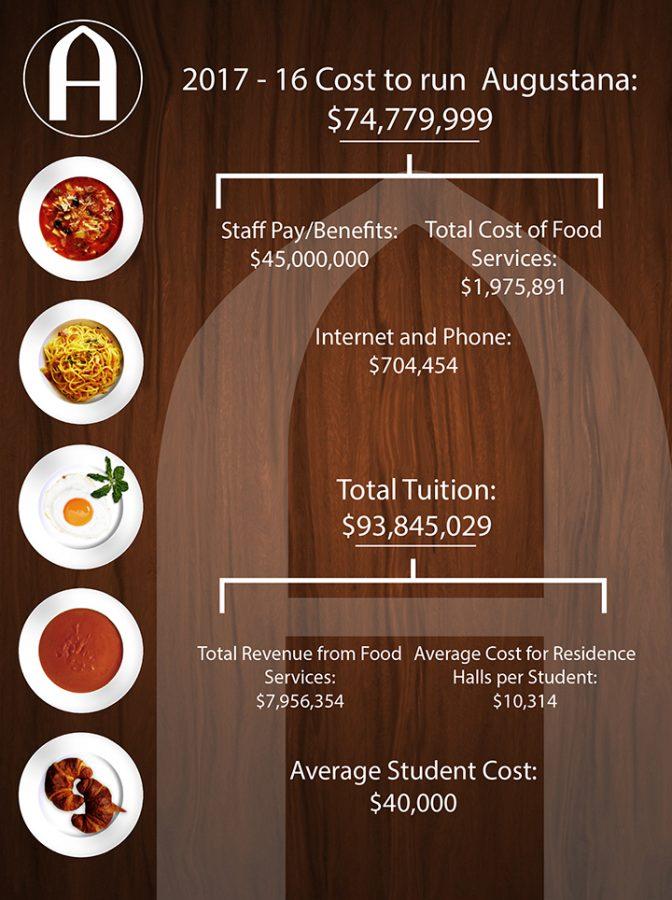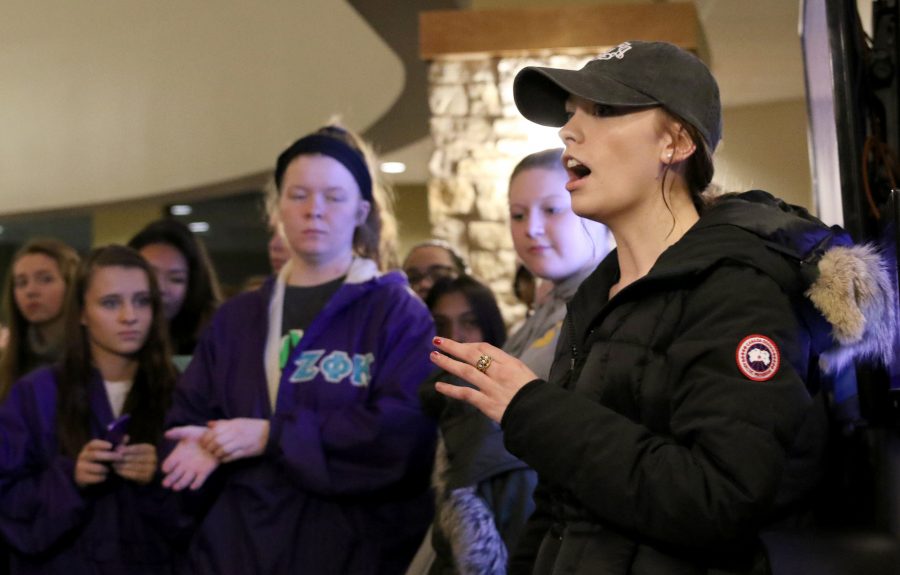By Sophie Reid, Brady Johnson, Thea Gonzales, and Collin Schopp
Graphic by Kevin Donovan
Step One: Tuition and Fees
It takes a little less than $75 million to run Augustana College. Roughly 50 percent of those expenses are covered by student tuition. What exactly is included in those expenses?
According to Kirk Anderson, Augustana class of 1993 graduate, Chief Financial Officer and Vice President for Finance and Administration for the past two years, school expenses go to faculty and staff, as well as goods and services like Internet and food that the college has to pay for, $1.97 million of which are expenses from dining services that supply food to the Gerber Center, Brunner Theatre Center, Brew, C-Store, and catering.
“We know that we have about $75 million every year that we’re going to accumulate, and we have to offset that with revenue for the school,” Anderson said. “If you go back to the original concept of ‘Augustana 2020,’ one of the things that’s in there is something we feel is our responsibility: to try to make Augustana as affordable as possible to kids.”
Augustana 2020 is a strategic plan focused on student growth at the college. It comes with four imperative goals that administration hopes to achieve by the year 2020: enhanced preparation, integrated experiences, affordability and value, as well as diversity and inclusion.
According to the plan, the school aims to “reduce core costs where possible” and “reduce unmet financial need” to accomplish its objective of affordability. As of 2017, the overall tuition charge was $93 million, costing an average of $40,000 per student.
However, the “sticker price” of tuition is not always what students end up paying. The total aid given to students in the past year equated to $56 million, of which $37.7 million was actually collected from students.
Though the student body may often criticize the cost of meal plans and residence halls, Anderson said their investment helps support everything on campus from faculty salaries to fine arts and sports teams.
“Students sometimes try to isolate and view things in a vacuum, meaning that they’ll look at food service and say, ‘I bought a meal plan and did the rough math. It costs me $10 a meal. Where is all that money going?’
I think they kind of view it as their $10 is only supporting the food service portion of the entire school. In reality, it’s not. It’s supporting anything across campus as we look at all those expenses. It could be maintenance or Augie Choice. It supports the track team and the basketball team and the football team. It supports the choir and band. It supports so much,” Anderson said.
Food costs from last year were about $1.97 million, but the revenue from food service was $7.9 million, money that goes into closing the difference to the school’s yearly expenses.
According to the Augustana profit and loss statement (P&L) actuals of last school year, food service, residence halls and tuition are the top three areas of revenue that fill the school’s need at $75 million. The puzzle is in finding the balance between those three sources of income.
“The reality of how we allocate all this stuff is if we were to charge less for food service or residence halls, we’d have to charge more on tuition to make up that gap,” Anderson said.
As a ‘93 graduate, Anderson only had about two or three dining choices. However, more than 24 years later, food service on campus has expanded to include vegetarian, vegan, gluten-free and halal options. As the student body increasing, Anderson is hopeful the dining selection reflects Augustana’s population: diverse and growing.
“We as a school have had a larger amount of international students and have to make sure that they feel welcome here — like it’s a second home,” Anderson said. “The whole concept of the school is to make sure students feel a sense of belonging. I think that’s just one way we try to do that, we try to accommodate as many different kids and as many different tastes as we can.”
Step Two: Gerber Center
The dining hall at Augustana offers students a wide variety of food on a daily basis. The decision between a hamburger or a chicken sandwich may be hard for a first year to decide on, but the people behind the counters have to decide what to serve to over 2,000 students a year. Fred Kirk, the Director of Dining, is starting out his first year at Augustana, but has already gained experience at a variety of other employers.
“I have 13 years at the University of Iowa and in the restaurant industry for another 13 years,” Kirk said.
Kirk is working alongside Mark Fleetwood, the Executive Chef who has worked at Augustana for nine years, to maintain the dining hall.
“I try to do a 28 day about every four weeks then it starts over after that. I try not to repeat a whole lot, but there is mac-n-cheese which is always once a week,” Fleetwood said.
The idea is to make sure students always have a variety of new choices to avoid stagnation.
“We do a good job rotating food and keeping a good variety on the menu,” Kirk said.
The menu is mostly compiled from Fleetwood, but input is appreciated.
“I do want cooks’ input and I will sit down before I create the menu to ask my lead cooks if they have any ideas,” Fleetwood said.
The menu is also greatly influenced by the number of students who eat at the dining hall. Kirk and his team receive updated numbers of the student and faculty population each term, so they can craft the appropriate menu. The dining service is always on the lookout when it comes to feeding the Augustana community.
“We are always looking for the best deal,” Fleetwood said. “We have three different fish vendors that we choose from. Performance Food Group is our main supplier.” Performance Food Group serves nationally and one of their warehouses is just a few blocks off campus.
The dining hall has a system of deciding who can be hired for food production.
“The key thing with a fine vendor is that they’re awarded this bid based upon competitive pricing, service, and other things they are able to do for us,” Kirk said. “Then there is the local farms that we might deal on occasion where they are able to serve us (college campus) without creating a lot of extra work for us.”
The vetting process according to Kirk requires all food production companies show that they are insured and also have the proper facilities to handle the food in a safe way.
“Local companies and farms you have to be a little more careful with,” Kirk said. “They still have to provide you with their insurance and that they are going to show up with a refrigerated truck.” The dining hall has a variety of suppliers to help craft what they serve the students. The suppliers range from Carbon’s Golden Malted, which handles waffle batter, to Dolan Farms that supply farm raised chicken.
The food production in the dining hall is set up to make sure that waste is minimal.
“There is no reason to overproduce, because you are spending labor and wasting food,” Fleetwood said. “If campus kitchen needs some products we will have some for them. We try to recreate based on the quality of it. Typically we do not want to reserve the same thing, but if we can make something else out of it we will. The end goal is still to have a superior product to serve.”
Step Three: Campus Kitchen
The life of the food doesn’t, however, always end in the cafeteria itself. Student organization Campus Kitchen makes its mission on campus to reduce and hopefully erase food waste. Campus Kitchen has, essentially three components to going through with this mission.
The first, according to co-President Mary Theresa Thomas, is recovery. “We see what the head chef, our connection, saves and freezes for us,” Thomas says. Of course, none of what is given to Campus Kitchen has been exposed outside of the kitchen, as the cafeteria donates food that never even made it out on the line. They then take inventory of what’s available. It could be vegetables, it could be mostly meats, but there’s always a variety wide enough for the Campus Kitchen to plan a nutritious meal from.
The second step of the process is to prepare and serve the hot meal planned from what can be recovered. The meal is prepared with the use of the cafeteria’s kitchen and is served free of charge to whoever wants to take some in the brew.
“We’re trying for twice a month, but right now we’re doing once a month,” said Nina Mendoza, the other co-President of Campus Kitchen. As of the time of the interview, there had been eight meals served by Campus Kitchen, all of them prepared in the short time since the organization’s Augustana Chapter was founded by the two Co-Presidents in November 2016, making it just over a year old.
The founders spoke about the possibility of someday expanding the meals to take in fresh food that would be otherwise wasted from local grocers in the area, and having the scale of the serving of the meals increase. For now though, the Campus Kitchen meals are another exclusive possible step of food that passes through the Gerber Center, and a well-supported one at that. “Even the kitchen staff will help with everything, while they’re doing their own work,” said Mendoza. “They’ve told us a few times, this is an awesome thing you’re doing.”
Step Four: Composting Initiative
The final step in the life of food on campus is waste. The city of Rock Island provides services to homes to pick up garbage, recycling, and sometimes yard waste such as leaves. However, they do not have a composting facility. This results in Augustana College also not having a composting system for all the food waste produced on campus.
A few students at Augustana were unhappy with this fact and did the work to minimize some of our campuses waste and setup a composting system. Members of the club ALAS (Augustana Local Agriculture Society), including president and sophomore Mikaylo Kelly, Junior Clayton Wassilak and first-year Tracy Pham, work on the composting initiative.
The initiative is a subprogram within ALAS and works in partnership with their other program, Augie Acres. Currently, Kelly, Wassilak, and Pham volunteer and collect food waste from the brew and the main dining hall in the Gerber Center. They then take that waste and bring it to the Augie Acres plot where they tend to the compost to eliminate risk of biohazard.
ALAS has collected 3,000 pounds of waste since last winter term. This waste only includes coffee grounds from the brew and food scraps from prep in the dining hall. Kelly sees this minimal waste as a good start but something that needs to expand if they want to make any serious change.
“We don’t collect anything post-consumer. Its straight from what kitchen prep creates and what they have the time or what they remember to put aside, which is a good amount but nowhere near everything,” Kelly said.
This program was able to begin and continue through the cooperation of dinning services. However, due to it being primarily student run, the initiative is always up in the air.
“Thinking about how it can be a sustainable project, I just have fingers crossed that there will continue to be students who are enthusiastic about composting, because if there aren’t it’s just going to fall on its face.”
Despite the possibility of a lack of future interest, the ALAS composting initiative continues to press on and look toward future goals of increasing structure and visibility.
“We are extremely thankful of the cooperation we have so far received, and we are hopeful to create more structure around the program,” Kelly said.
The stories behind your meal swipes
December 14, 2017
0
More to Discover








































































































